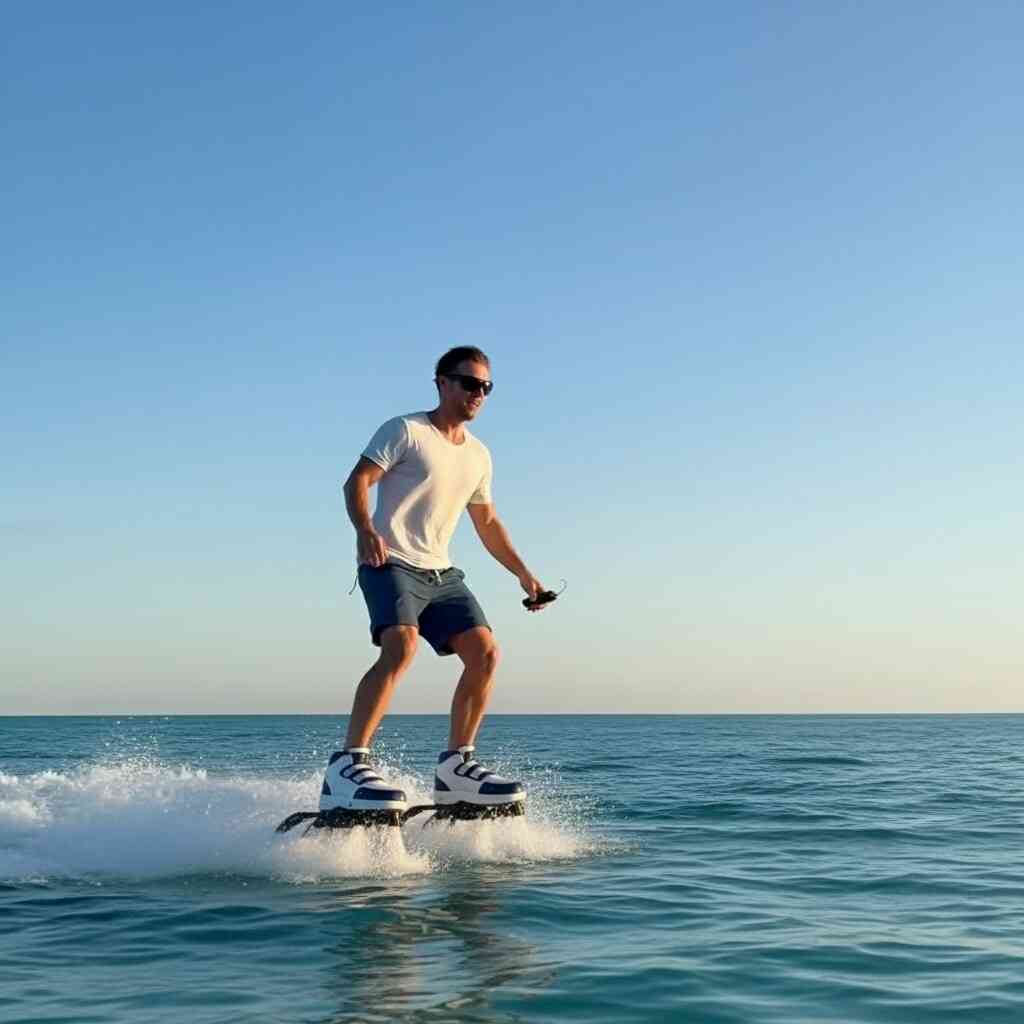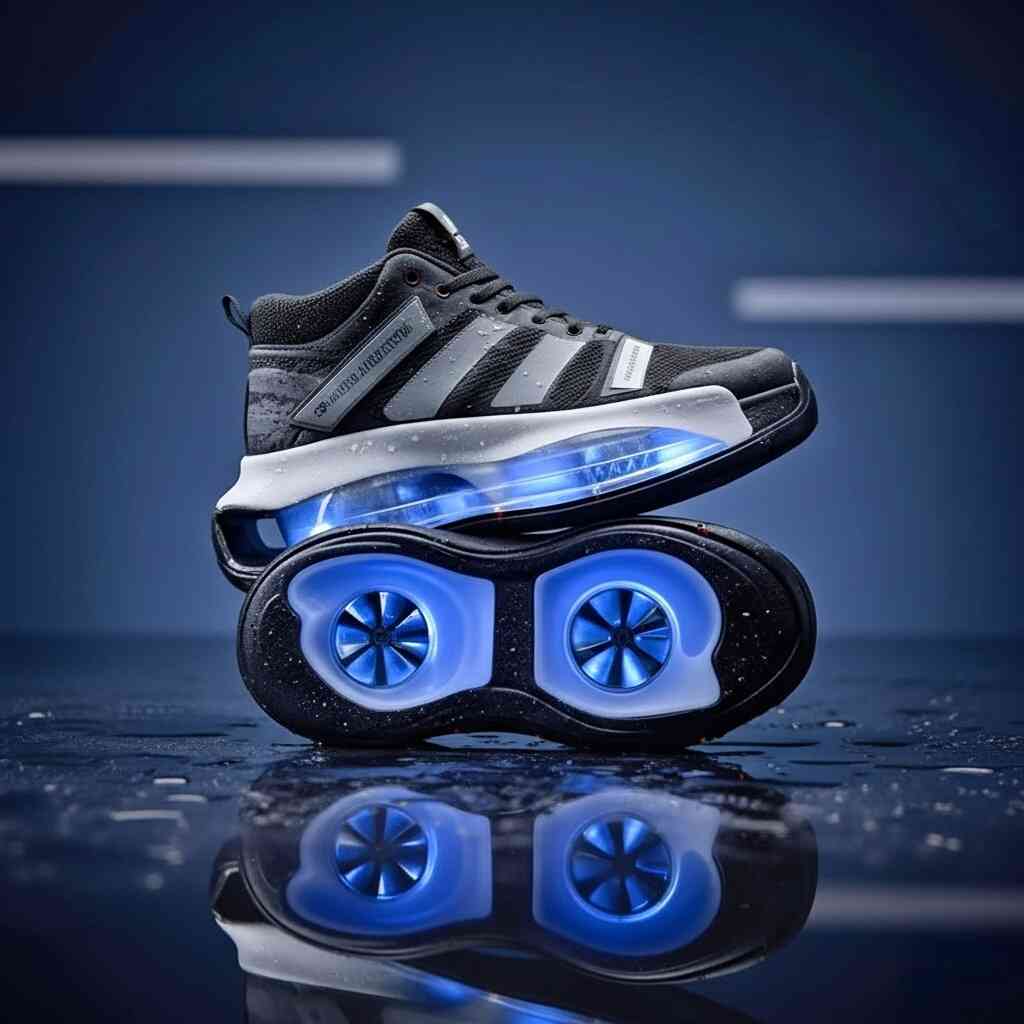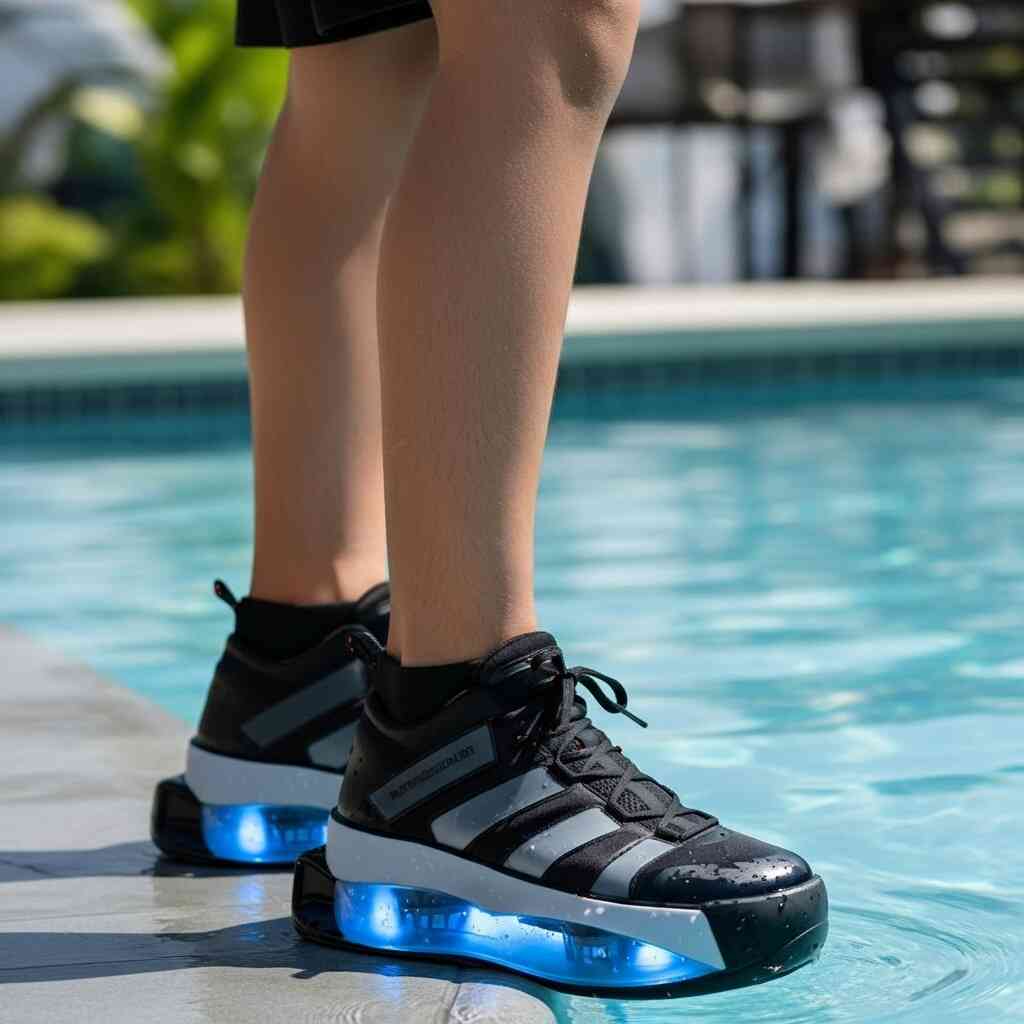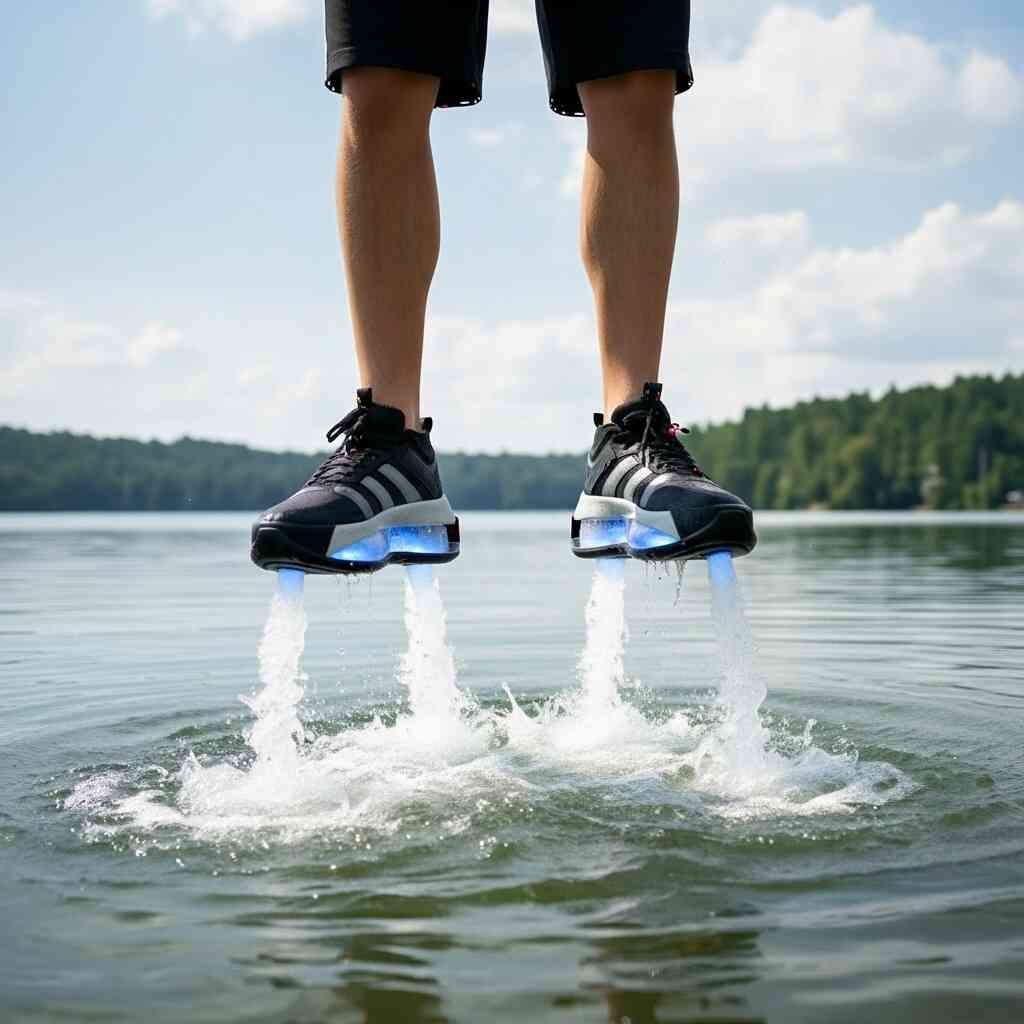Water jet shoes are revolutionizing how enthusiasts and everyday users experience aquatic environments. Combining innovation with practicality, these shoes provide unmatched mobility and safety while engaging in water-based activities. Whether you’re a professional diver, a recreational swimmer, or just someone exploring the beauty of aquatic adventures, water jet shoes elevate your experience. Offering a perfect blend of durability, comfort, and functionality, water jet shoes are more than just footwear—they are a gateway to exploring water worlds like never before.
English language: water jet shoes.
Understanding Water Jet Shoes – Innovation at the Heart of Aquatic Mobility
The concept of water jet shoes centers around advanced technological design that harnesses water pressure and propulsion. Unlike traditional water shoes or flippers that merely assist swimmers, water jet shoes actively facilitate movement, making underwater navigation effortless and efficient. This innovation embodies a fusion between sports technology, safety enhancements, and ergonomic design, ensuring maximum user benefit.

Before diving into the specifics, it’s essential to comprehend the fundamental nature of water jet shoes. These specialized shoes incorporate water jet propulsion systems directly into the footwear, allowing users to propel themselves forward with minimal effort. This section explores the core principles behind water jet shoes, including their design evolution, core functionalities, and the science that makes them possible.
Water jet shoes are designed with embedded water pumps and nozzles that generate high-pressure streams, providing thrust similar to jet engines but scaled down for human use. This allows for augmented mobility both underwater and in shallow water environments. Moreover, their lightweight and ergonomic design minimizes fatigue and enhances control, making them suitable for a wide array of aquatic activities—from recreational swimming to professional diving.
The Evolution of Water Jet Shoes: From Concept to Reality
Water jet shoes have a fascinating history rooted in the desire to improve aquatic mobility. Initially, the need for efficient underwater propulsion led inventors to explore various solutions, from simple fins to complex jet systems. The early prototypes relied heavily on external equipment, such as attached jet packs or larger motorized devices, which limited mobility and convenience.

Over time, technological advances in miniature water pumps, lightweight materials, and ergonomic design principles transformed these concepts into wearable shoes. Modern water jet shoes now incorporate compact, battery-powered water pumps integrated seamlessly into the footwear, allowing for natural movement without cumbersome equipment.
The evolution also reflects a shift toward user safety and environmental considerations. Manufacturers now focus on creating eco-friendly models that minimize water pollution and energy consumption. Additionally, their designs prioritize comfort, giving users confidence to engage in water activities for extended periods.
Core Functionalities: How Water Jet Shoes Work
The core of water jet shoes lies in their ability to utilize water pressure efficiently while maintaining safety. These shoes are equipped with small, powerful water pumps that draw water from the surrounding environment. The water is then forced through nozzles at high velocity, generating a propulsion force that propels the wearer forward.

Their control systems allow users to adjust the thrust according to their needs, making them adaptable for different water conditions. For example, beginners can use low-pressure settings for stability, while experienced adventurers can maximize speed and maneuverability. The shoes also feature safety mechanisms, such as automatic shut-off systems and protective casings, that ensure reliable operation and user safety.
The design prioritizes durability, with corrosion-resistant materials like stainless steel and reinforced plastics. This prevents damage from prolonged exposure to water, salt, or chlorinated environments. Additionally, the shoes often include ergonomic features—like cushioned insoles, adjustable straps, and ergonomic shaping—that enhance comfort during long periods of use, reducing fatigue and improving overall experience.
How to Use Water Jet Shoes Effectively and Safely
Using water jet shoes can unlock new levels of aquatic enjoyment, but proper knowledge and technique are essential for maximizing safety and performance. Whether you’re a novice or an expert, understanding how to operate these shoes correctly is crucial. This section discusses practical steps, safety tips, and training methods for using water jet shoes effectively.

Before hitting the water, always perform a thorough inspection of the shoes—check for any damages, ensure the pump system functions properly, and verify battery levels if applicable. Familiarize yourself with the controls, especially how to adjust propulsion and stop functions. Proper use extends the lifespan of your water jet shoes and ensures safe operation during your water adventures.
When starting, begin slow and in shallow water environments to gain a sense of how the shoes respond to different settings. Maintain steady posture and avoid sudden movements which could destabilize you. Use your core muscles for balance and steering, as this enhances control and reduces fatigue.
Proper training involves practicing maneuvering techniques like turning, stopping, and accelerating in controlled environments. Once confident, gradually increase water conditions’ complexity—surging forward into currents or navigating around obstacles. Wearing safety gear such as life vests and goggles is recommended, and always adhere to local safety regulations and guidelines. As you grow more proficient, you can explore advanced maneuvers and even synchronized group activities to fully appreciate the capabilities of water jet shoes.
Comparing Water Jet Shoes to Traditional Water Footwear and Other propulsion Devices
Understanding the differences between water jet shoes and other water propulsion systems is essential for making informed choices. Each system offers unique advantages, suited for specific activities or preferences. This section provides an in-depth comparison to highlight the innovative edge of water jet shoes.

Traditional water footwear, such as fins, provides passive propulsion relying on the user’s kicking power. While effective for swimming short distances, they often lack advanced control and can cause fatigue over extended use. Flippers are simple and inexpensive but are limited in maneuverability and comfort, especially for prolonged durations.
In contrast, water jet shoes deliver active propulsion. They empower users with adjustable speed and precise control, significantly reducing physical effort. They also promote better balance and stability with ergonomic designs that conform to natural foot anatomy. The ability to regulate thrust makes them more versatile for different water conditions, whether you’re exploring coral reefs, swimming in lakes, or engaging in competitive water sports.
Compared to motorized jet propellers or jet packs, water jet shoes are more compact, lightweight, and easier to handle, requiring less training. Jet packs and larger propulsion devices often demand technical skills, safety gear, and higher energy consumption. Water jet shoes strike an excellent balance between power, control, and ease of use, making them ideal for casual swimmers and professionals alike.
Advantages and Disadvantages of Water Jet Shoes Versus Other Systems
One of the primary advantages of water jet shoes is their natural movement simulation—allowing users to “walk” or “run” on water with minimal effort. This grass-roots approach reduces the learning curve, enabling quicker adaptation. Additionally, their portability makes them convenient for travel, with no need for extensive setup or maintenance.

However, disadvantages include dependency on water availability and environmental conditions. They may be less effective in stagnant or shallow waters due to reliance on water flow and pressure. Also, their battery life or power source limits operational duration, which varies depending on models and usage.
In summary, water jet shoes outperform traditional passive systems in maneuverability and user experience but may not replace larger propulsion tools in extreme or specialized applications. The decision rests on activity goals, physical fitness, and environmental context.
Design Innovations and Future Trends in Water Jet Shoes – Pioneering Aquatic Footwear
Design innovation remains at the forefront of water jet shoes’ evolution. As technology advances, manufacturers seek to enhance functionality, sustainability, and user comfort while opening new horizons in aquatic activities. This section explores recent innovations, future prospects, and the impact of design on safety, performance, and user experience.
One notable trend is the integration of smart technology. Some water jet shoes now feature IoT connectivity, allowing users to monitor energy consumption, speed, and battery life via smartphone applications. This data-driven approach enhances user control, troubleshooting, and customization, making the experience more interactive and tailored.
Materials science also plays a role in progressive design. The adoption of lightweight, eco-friendly, and corrosion-resistant materials ensures durability and reduces environmental impact. Manufacturing techniques like 3D printing facilitate personalized fittings and rapid prototyping, leading to customized solutions that cater to individual anatomical and activity needs.
Additionally, ergonomic and aesthetic considerations have become paramount. Modern designs emphasize sleek profiles, color customization, and added comfort features like cushioned insoles and adjustable straps. These factors contribute to broader acceptance among users, from recreational to professional sectors.
Looking ahead, innovations such as energy harvesting (capturing kinetic or solar energy to extend battery life), AI-enhanced control systems, and eco-conscious manufacturing practices will likely dominate the next era of water jet shoes. As these trends unfold, they promise to deepen user engagement, safety, and sustainable development within aquatic sports technology.
FAQs About Water Jet Shoes
How do water jet shoes differ from traditional fins or flippers?
Water jet shoes actively propel the user through water by utilizing embedded water pumps and nozzles, providing adjustable thrust and greater maneuverability. Traditional fins or flippers rely solely on the user’s kicking motion, offering passive propulsion, often resulting in fatigue and less control. Water jet shoes integrate advanced technology for a more natural, controlled, and effortless aquatic experience.
Are water jet shoes safe for beginners?
Yes, water jet shoes are designed with safety features and ergonomic considerations that make them suitable even for beginners. However, users should start in shallow, calm waters and practice basic maneuvers before advancing to more challenging environments. Wearing appropriate safety gear, such as life vests and goggles, further enhances safety, and proper training or guidance is recommended.
How long can I use water jet shoes before recharging or replacing batteries?
The operational duration varies depending on the model, battery capacity, and usage conditions. Most high-quality water jet shoes offer between one to three hours of continuous use on a full charge. It’s advisable to carry backup batteries or charging stations during extended activities and avoid overusing devices beyond their recommended time to preserve battery health.
Can water jet shoes be used in saltwater and freshwater environments?
Yes, modern water jet shoes are typically constructed from corrosion-resistant materials, making them suitable for both saltwater and freshwater use. Routine rinsing after saltwater exposure prolongs their lifespan and maintains optimal performance. Always follow manufacturer guidelines regarding maintenance and cleaning to prevent damage and ensure longevity.
What should I consider when choosing water jet shoes?
When selecting water jet shoes, consider factors such as the intended activity (recreational, professional, competitive), water conditions, device power and battery life, safety features, ergonomic design, weight, and ease of operation. Proper fit and comfort are essential to prevent fatigue or discomfort during extended use. Innovate with brands that prioritize durability, customer support, and technological advancements.
Conclusion
Water jet shoes embody the pinnacle of aquatic innovation, seamlessly blending cutting-edge technology with ergonomic design to redefine water mobility. Their active propulsion systems facilitate effortless navigation in aquatic environments, enabling users to explore with greater speed, control, and safety. With ongoing technological developments, such as IoT integration and eco-conscious materials, water jet shoes promise a future where aquatic adventures are more accessible, sustainable, and exhilarating. As the industry advances, these shoes will continue to serve as an essential tool for water sports enthusiasts, divers, and casual explorers alike, transforming water-based activities from mere recreation into a realm of limitless possibility.
